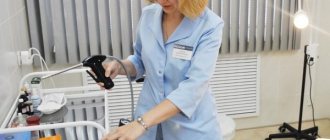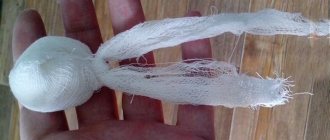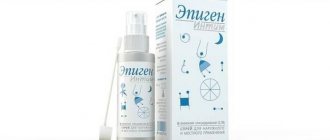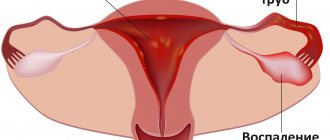November 27, AmazingHealth
Since ancient times, people have known the healing properties of honey. Our ancestors used it as a natural antiseptic. Honey's ability to reduce fever is also known. Honey was also used in the treatment of colds, as well as pathologies of the gastrointestinal tract. Treatment with honey could be used either in its pure form or in combination with other natural products. In particular, a mixture of honey and aloe plant is quite popular. Tampons with honey and aloe are quite famous. They are successfully used as a means of eliminating various women's problems.
Useful properties of honey
Such a natural product has a very positive effect on the functioning of the body, having several effects at once:
- antibiotic,
- hypotensive,
- antitoxic,
- desensitizing,
- wound healing,
- antibacterial,
- soothing,
- immunomodulatory,
- antiviral,
- antioxidant,
- mild irritant.
In addition, it stabilizes metabolic processes, stimulates liver function, and also enhances the effect of certain medications, while simultaneously neutralizing their side effects. And all this thanks to the rich composition, which contains zinc, aluminum, magnesium, iron, folic and antothenic acids, as well as beneficial vitamins and digestive enzymes. Find out about the medicinal properties in gynecology of tampons with Vishnevsky ointment.
What honey is suitable for gynecology?
Honey tampons in gynecology are prepared on the basis of a certain variety of this beekeeping product. Suitable for such purposes:
- Thyme;
- Lime;
- Melissa;
- Mint.
All these varieties can be bought in a special store or directly from beekeepers. It is very important that the product is fresh and of high quality. It is not advisable to use honey collected in summer or early autumn. The same rule, by the way, applies to urban plants that absorb harmful emissions.
Traditional medicine sometimes turns out to be more effective than pharmaceutical medications, and most importantly, they have virtually no contraindications. It is known to use not only honey, but also herbs in gynecology. This does not mean infusions for irrigating the vaginal flora, but a collection of pressed herbs in the form of tampons. Therapeutic tampons Beautiful Life are the most popular representative of oriental traditional medicine. They are used to treat cervical erosion, colpitis, thrush and many other diseases. Follow the link to learn more about the product.
Read about the use of tampons with Dimexide in gynecology.
Benefit
The combination of bee nectar with agave juice as a folk medicine is well known. This is a popular herbal remedy that will be effective in combination with pharmaceutical treatments and other drugs (for example, wax).
Soaked tampons with aloe and honey will be useful for various diseases of the genital area in women. This product can be made with your own hands or purchased at a pharmacy.
There is also another option - honey and onion tampons. These products are made in the form of a cotton-gauze roll, which is soaked in a healing composition. It is important to sterilize the product during the manufacturing process (in a medical boiler or oven). Industrial products have already been processed, so they are more reliable in terms of disinfection.
Indications for use
Reviews from doctors and patients testify to a large list of female diseases, during which tampons with honey in gynecology showed good results:
- bacterial vaginitis;
- inflammation of the myometrium;
- endometriosis;
- inflammation of the appendages;
- ovarian cyst;
- leucorrhoea;
- ectopia (cervical erosion);
- inflammatory processes of the reproductive system;
- adhesions;
- problematic conception;
- cystitis;
- menopausal syndrome;
- tissue restoration after surgery.
But remember that homemade tampons may have some side effects.
Onions in the treatment of cervical erosion
Onion pulp contains biologically active substances - phytoncides, which can have a positive effect in the fight against pathogenic microorganisms. When considering their work, it can be compared to antibiotics. The advantage of the plant extract is that treatment with its use is not accompanied by adverse reactions.
Onions have the following properties:
- antioxidant;
- wound healing;
- anti-inflammatory;
- antimicrobial;
- painkiller.
When using onions for cervical erosion in combination with honey, you can achieve lasting results. Onion tampons for erosion are effective only in the first stages of the disease. Obtaining a result does not guarantee the absence of relapse of the disease. You can resort to using the method after obtaining a qualitative assessment of the condition of the mucous membrane and establishing the causes of erosion.
Features of application
The duration of the course of using home remedies to treat an erosive condition depends on several conditions:
- the nature of the disease;
- degree of erosive damage;
- the body's reaction to the treatment used.
Basic Rules:
- Onion tampons are inserted into the vagina before bed after hygiene procedures.
- If adverse reactions occur in the form of unbearable itching or burning, the tampon should be removed immediately.
- The process of restoring the integrity of the mucous membranes should be monitored by a gynecologist. A woman should be examined at least once every 2 weeks, and more often if prescribed by a doctor.
- The duration of use of onion tampons is no more than 2 weeks.
How to make medicinal tampons
The process of making tampons from onions and honey is quite simple. The main point to pay attention to is the use of sterile instruments for cutting and peeling onions. To disinfect the knife, douse it with boiling water and then wipe it with alcohol.
Cooking process:
- A small onion is peeled and the middle is removed.
- Liquid honey is placed in the middle and placed in the oven for 5-7 minutes.
- The prepared tampon is wrapped in sterile gauze, the onion is fixed and small tails are left to ensure removal from the vagina.
When manufacturing the product, you must use sterile materials and instruments. It is worth making a tampon before direct use, because during storage, baked onions lose their medicinal qualities.
Contraindications for use
This treatment is not suitable for all women. A direct contraindication is individual intolerance. Sometimes it happens:
- allergic skin reaction;
- violation of vaginal microflora;
- sensations of itching and burning;
- swelling;
- increased inflammation.
If any side effects occur, treatment should be stopped immediately. In any case, you need to monitor the body’s reaction, which manifests itself after several procedures. If during this time no negative consequences have arisen, then the course can be continued.
Indications
Endometriosis is the pathological growth of the mucous membrane lining the uterus outside of it. Depending on the location of the disease, different types of the disease are distinguished:
- endometriosis of the uterus (adenomyosis) – the mucous layer grows into the muscle tissue, causing diffuse changes in the myometrium;
- external endometriosis (genital) – the endometrium spreads to
- the outer lining of the uterus, fallopian tubes and ovaries, often accompanied by cystic formations;
- extragenital endometriosis (common) – affects neighboring organs of the abdominal cavity (intestines, liver, lungs).
The disease can be mixed. It manifests itself with symptoms such as abdominal pain, uterine bleeding, menstrual irregularities and ovarian dysfunction. It is imperative to treat pathological growth of the endometrium. The effectiveness of folk remedies is confirmed in the treatment of genital endometriosis (internal and external).
Endometriosis leads to the formation of adhesions in the pelvis and structural changes in the reproductive organs, resulting in infertility.
What tampons can I use?
Ready from the store. Here the tampon needs to be wrapped in pre-moistened gauze. This method is convenient, but some women note the low effectiveness of using store-bought tampons.
From a bandage. A sterile bandage is purchased and a strip of 20-30 centimeters is cut from a skein. After this, the bandage is rolled into a tight cylinder and secured with thread.
Cotton wool and gauze. The most popular method of preparation, but it must be done correctly, otherwise honey will leak out of the vagina, or the tampon will swell greatly inside.
How to prepare a tampon at home?
Oblong tampons are made as follows:
- The required amount of cotton wool is taken, after which it must be given an oblong shape.
- The swab is wrapped with pre-sterilized thread.
- The cotton wool is wrapped in a rectangle of gauze.
- It is important to leave tails on the gauze so that they can be easily removed from the vagina.
Round tampons are even easier to make:
- Take a small piece of cotton wool;
- Form a tight ball;
- We place it between gauze or bandage.
If everything is done correctly, then there will be no problems with insertion into the vagina, and honey will not leak out. The main thing is to leave the ends of the winding outside so that you can later remove the tampon.
Rules for using honey tampons in gynecology
- Allergy testing. Before starting the course, it is advisable to apply honey to a clean area of skin without damage. If there are no negative reactions (itching, swelling, redness), then treatment can begin.
- Oral intake. You can enhance the effect of home therapy if you eat honey at the same time. But it is important to maintain proportions, because excessive consumption of bee products can be harmful.
- Sterilization. This applies not only to cotton wool, gauze and bandages, but also to threads and scissors. Any infection should not be allowed to enter the vagina during the procedure.
- Use of sterile gloves. Well-washed hands are not the key to a safe procedure, so it doesn’t hurt to be on the safe side.
- Harvesting is not allowed. It is best to make fresh tampons that will be used immediately. Even if they are placed in a clean container, their effectiveness is reduced and the risk of bacteria entering increases.
- We select the correct amount of cotton wool. Vata quickly absorbs liquid, so it can increase in the vagina, causing discomfort.
- Procedures before bedtime. At night, the body relaxes, so nutrients are absorbed faster.
- The need for sanitary pads. Honey on a tampon cannot be absorbed so quickly by the vaginal mucosa, which is why the product can get on your underwear.
- You need to know not only how to properly make tampons at home, but also what each recipe helps with.
Treatment of diseases
Against uterine inflammation
Topical application of honey is good for inflammation. To do this, you need to wrap a small amount of this product in gauze and then place it in the vagina for up to 4 hours. In this case, it is better to use honey with water (30% solution). The course of treatment is two weeks. Recipes with aloe are also effective in gynecology for inflammatory processes.
Treatment of endometriosis
If the doctor has not prescribed surgical intervention, then you can also correct the spread of the uterine mucous layer using honey tampons. In addition, they can help get rid of ovarian cysts, as well as prevent relapse of the disease.
Cooking method:
- a ball with a diameter of two or three centimeters is made from the bandage;
- the ball is secured with a bandage or gauze;
- the finished tampon is moistened in a solution (honey and boiled water in a ratio of 1:2);
- inserted into the vagina at night;
- the course of treatment is two weeks of daily procedures;
- Before the procedure, you can douche with a non-saturated chamomile solution.
Infertility
Even with infertility, the use of beekeeping products is practiced. Of course, for serious health problems, traditional medicine will not cause pregnancy, but it can be a good complementary treatment.
There are two recipes:
- Exclusively with honey. Prepare a honey solution (1:2 with boiled water). Next, soak the gauze in this solution, and then insert it into the vagina for 12 hours. The procedure must be carried out daily for 21 days.
- Tampons with honey and aloe. Take a teaspoon of honey and a small aloe leaf. First, a peeled aloe leaf is placed in gauze, which is covered with honey. Next, you need to secure everything with a thread and insert it into the vagina for the whole night. Tampons with aloe and honey for infertility are administered for at least 10 days. Sometimes you need to take short breaks.
Elimination of thrush
A swab with honey for thrush is used together with a decoction of nasturtium flowers.
Decoction recipe:
- 10 g flowers;
- 100 ml water.
The broth should be boiled for no more than 15 minutes, after which it should be strained. A moistened swab is inserted overnight. The course of treatment must be carried out for at least two weeks.
Treatment of cervical erosion
Here, the use of honey solution is combined with the intake of fireweed tincture. Local use is carried out daily (the gauze ball is left for 12 hours). The tincture is drunk three times a day, half an hour before meals. The course of treatment lasts three weeks, after which you need to visit a gynecologist. It is also important to take medications prescribed by your doctor.
You can also use tampons with honey and onions. Here a hole is made in a previously cleaned onion head, after which honey is poured in. Next, the head is baked in the oven and cooled, after which it is placed in sterile gauze. Onion tampons are very effective in combating ectopia in the early stages of development. In advanced cases, the effectiveness of tampons with onions and honey is extremely low.
Fighting bacterial vaginitis (colpitis)
Not only the woman, but also her sexual partner should be treated here. It is worth noting that such a serious disease requires additional medications.
A man should consume up to 100 grams of honey several times a day. You can eat it pure or drink it with boiled water. A woman is recommended to insert a ball of gauze or bandage with a small piece of bee product into her vagina every day, leaving it for 3-4 hours. The course of treatment is up to two weeks.
But it’s worth noting right away that this is more of a preventative measure or an additional method of treatment. It is impossible to completely replace traditional medicine when choosing a method for treating gynecological diseases. For female diseases of the reproductive system, it is important to organize complex treatment, where medications can be combined with traditional medicine methods.
Tampons based on aloe with honey, as well as recipes based on onions, additional medicinal herbs and components should be used carefully, strictly following the course of treatment, especially during pregnancy. In addition, it is necessary to consult a gynecologist in advance so as not to harm your body.
With the help of basic tips, you can create optimal conditions for conception, prevention and treatment of most gynecological pathologies. But you shouldn’t rely solely on traditional medicine, so no one can cancel trips to the hospital.
Instructions on how to make tampons with aloe and honey
Many women wonder how to make tampons with honey and aloe. It's quite simple.
The algorithm for their production includes the following steps:
- Take sterile gauze and fold it into three layers;
- A mixture of honey and pureed aloe is prepared, which must be thoroughly mixed;
- A tampon is soaked in this mixture;
- After this, it is tied with a thread, which will later be needed for convenient removal of the tampon.
The finished tampon is inserted into the vagina so that it is convenient and comfortable. The thread should remain outside. After the required time has passed, the tampon must be removed. Its repeated use is not permissible under any circumstances. The used tampon must be disposed of.
It is better to use this treatment immediately before bedtime. When using these tampons, it is recommended to attach panty liners to your underwear. This is done to avoid soiling the bed.










